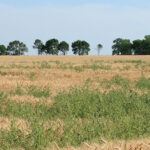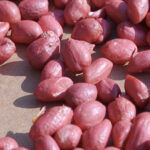Control These Yield-Robbing Diseases in Leafy Greens
Disease prevention with multiple modes of action is key to protecting lettuce from yield-robbing diseases early in the growing season.

Warmer conditions and cooler evenings are the ideal conditions for two of the most significant lettuce diseases: powdery mildew and Sclerotinia rot. Early intervention with fungicides with multiple modes of action can reduce potential yield loss.
The University of California IPM Program cites powdery mildew, which damages leaves and reduces yield potential, as a serious threat to lettuce growers. Powdery mildew is easily identified by its characteristic white, powdery appearance on leaves, but by the time symptoms are exhibited it is often too late to prevent significant damage. Eryisyphe cichoracearum, the pathogen that causes the disease, thrives in warm, humid, and poorly lit environments. Greenhouses and lower leaves are particularly susceptible to powdery mildew. Early disease prevention is key to protecting lettuce early in the growing season.
Sclerotinia rot, commonly known as lettuce drop, may be caused by Sclerotinia minor or Sclerotinia sclerotiorum. S. minor thrives in moist conditions and infects stems at the base of the plant, causing a soft decay that destroys crown tissue. Crops infected by this pathogen will often wilt near maturity, so early intervention is essential. S. sclerotiorum, the more common pathogen, also causes lower-leaf infection but has aerial spores that infect upper leaves in cool and moist conditions. This rot occurs along with visible white mycelial growth in upper leaves. Under moist conditions, both pathogens can survive in soil for several years. The most effective protection against these diseases is a disease prevention program including multiple modes of action to fight disease resistance.

Miravis® Prime fungicide contains two active ingredients, fludioxonil and ADEPIDYN® technology, for difficult-to-control diseases in leafy vegetables. These powerful active ingredients distribute evenly across leaf surfaces to provide protection from powdery mildew, Sclerotinia rot and other yield-robbing diseases.
- Powdery mildew and Sclerotinia rot are two of the most damaging lettuce diseases.
- Disease management plans for these early season diseases should include applications of fungicides with multiple modes of action.
- Miravis® Prime can reduce potential yield loss due to powdery mildew, Sclerotinia rot and other yield-robbing diseases.























